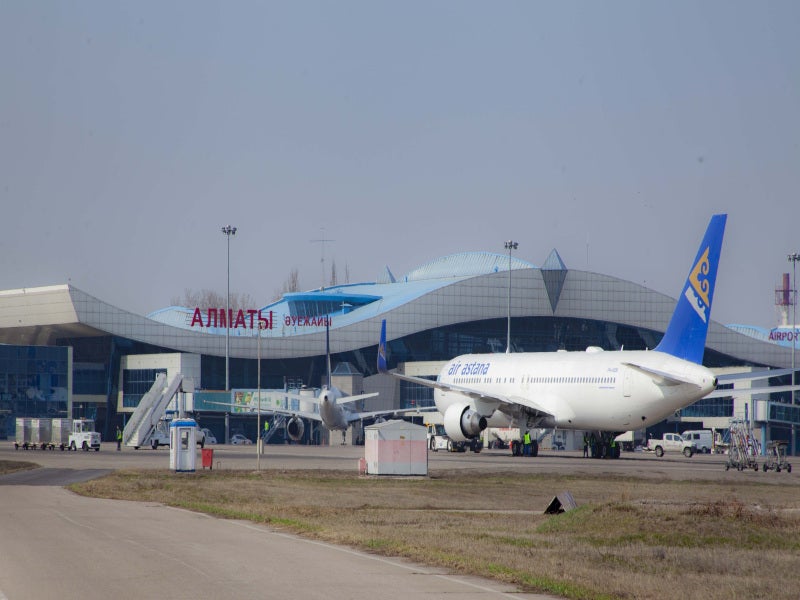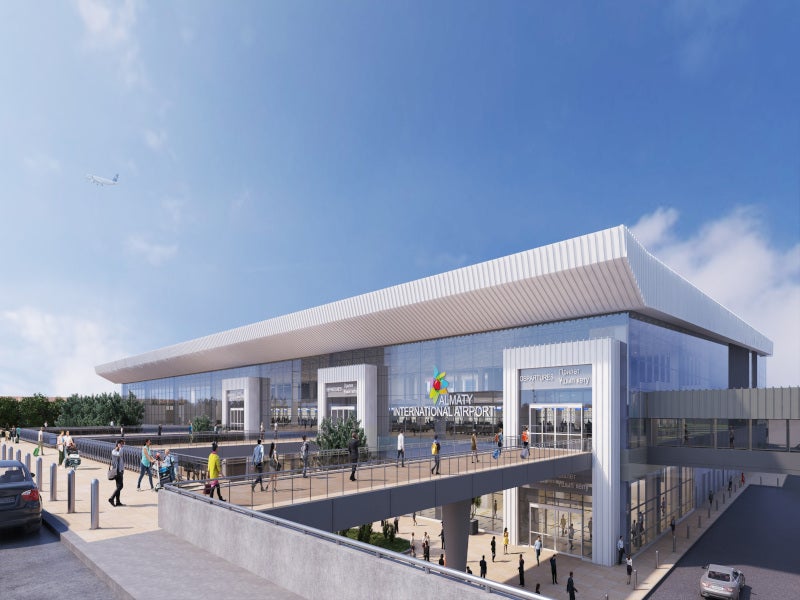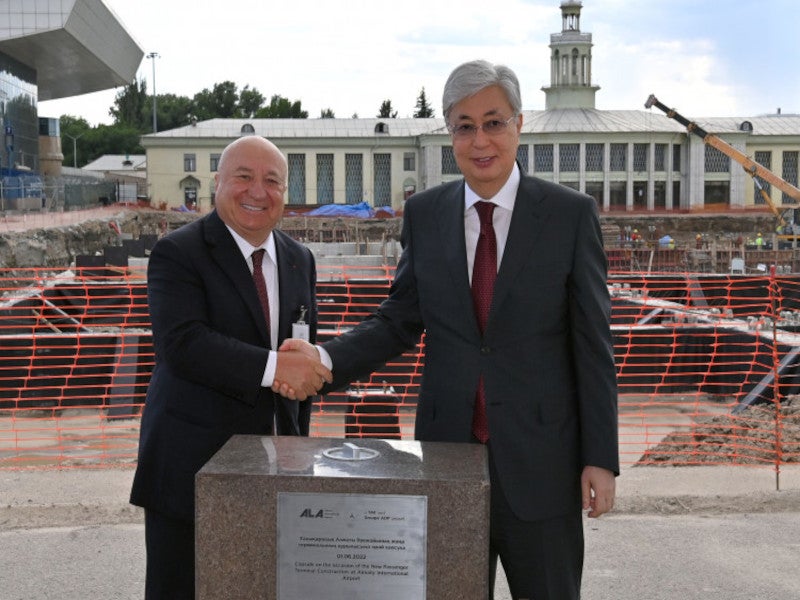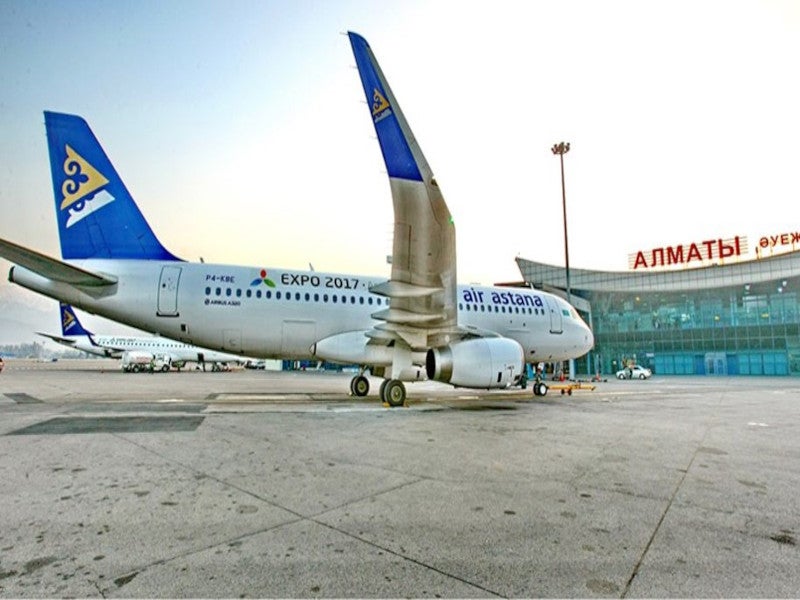The Almaty international airport in Almaty, Kazakhstan, is undergoing expansion and modernisation to meet international airport infrastructure standards.
TAV Airports (TAV), part of Groupe ADP, and Kazakhstan Infrastructure Fund, which is managed by VPE Capital and backed by Kazyna Capital Management, acquired the Almaty airport in 2021.
TAV owns the airport and associated fuel and catering businesses with an 85% interest. Kazakhstan Infrastructure Fund holds the remaining 15% interest.
TAV is investing more than $200m in the next two years in the construction of the new terminal, which is expected to increase the airport’s capacity to more than 14 million passengers a year.
Construction works related to the new terminal started in June 2022 and are expected to be completed in Summer 2024. The new terminal will be dedicated to handle international flights, while the existing terminal will handle domestic flights.
A concept design document for the new terminal was released in June 2022, while a detailed design document is expected to be issued after finalising the design.
Location and existing infrastructure
The Almaty airport, the largest international airport in Kazakhstan, is located 12km northeast of the central Almaty.
Operational since 1947, the airport features two parallel runways, apron areas, helipads, and associated infrastructure.
The existing terminal building was constructed in 2004 after the previous terminal building was destroyed during a fire accident in the late 1990s.
Almaty international airport expansion details
The existing airport facilities do not support the growth of the airport. The expansion aims to meet the projected passenger growth by increasing the terminal capacity.
The project involves the construction of a new international terminal and the upgrade of the existing terminal facilities.
Concerns have been raised over the impact of the new terminal construction on the existing historic VIP terminal building, which is a listed heritage asset. Two options are being considered for the new terminal. The first option is to retain the VIP building and construct the new terminal adjacent to the VIP building. The two buildings are proposed to be integrated and a split-level entrance will be created from a vehicle ramp built in front of the VIP terminal building.
The second option considers the development of the new passenger terminal building at the current location of the VIP terminal building and the relocation of the VIP terminal facilities to a new building. It involves preserving the heritage elements of the building and relocating them to the new building, which is proposed to be built along Zakarpatskaya Street, south of the current terminal location.
Financing
The project is supported by the European Bank for Reconstruction and Development (EBRD), International Finance Corporation (IFC), a member of the World Bank Group, and TAV Airports.
EBRD approved a loan of up to $229m for refinancing the acquisition of the airport by the TAV Airports-led consortium, as well as financing the expansion and modernisation of the airport in November 2020.
The loan includes $150m from EBRD’s own account, and up to $79m that will be syndicated to commercial banks.
EBRD and IFC agreed to provide senior loans of $150m each to support the project in September 2021. IFC’s financing package also includes $72m from its Managed Co-Lending Portfolio Program.
The EBRD and the IFC jointly mobilised parallel loans from the Eurasian Development Bank (EDB) and DEG, the German development finance institution, for the project. The parallel loans totalling $78m have equal contribution from EDB and DEG.
Furthermore, the airport received a grant of $600,000 from the Global Environmental Facility, a multilateral environmental fund.
Terminal layout and features
The new passenger terminal building for international operations is expected to spread across approximately 48,000m². It will feature two floors for passengers, as well as a mezzanine level.
The passenger arrivals facilities on the ground floor are expected to include an arrival hall, arrival controls and passport area, a baggage reclaim area, and customs and duty-free areas.
Furthermore, the ground floor will feature departure areas for remote gates, a VIP area, and retail concessions. It will also be installed with baggage handling systems.
The upper level will comprise the departure area and include the departures hall, check-in area, departure controls and passport control area, boarding gates, and passenger boarding bridges. Amenities will include duty-free area, shops, and food and beverage outlets.
The split-level design is expected to separate arrival and departure passenger throughflow. The mezzanine level will feature passenger transfer areas, along with space for passenger lounges.
Baggage handling systems
The new international terminal will be installed with a baggage handling system, with a capacity of 2,400 bags an hour.
The solution will include an outbound baggage system with 40 check-in conveyors and an inbound system. A screening and sortation system of the outbound system will feed four make-up carousels while the inbound system comprises three reclaim carousels.
Sustainability at the new terminal
The new international terminal at the Almaty airport is expected to be the first Excellence in Design for Greater Efficiencies (EDGE) Advanced-certified sustainable airport terminal in the Central Asia region.
The terminal will incorporate sustainability features such as high-grade insulation materials and water-efficient equipment. TAV Airports will also implement advanced technology and practices to reduce noise emissions, light, waste, air pollution, and greenhouse gas emissions.
Contractors
ADP Ingénierie, a Groupe ADP company, conducted a feasibility study on behalf of TAV Airports to estimate the capital costs for the new terminal.
The contractual scope includes the concept and preliminary designs, as well as the generic specifications of the project.
TAV Construction received a contract to provide engineering, procurement and construction (EPC) services for the project.
Alstef Group was contracted to install the baggage handling system at the new terminal.
Environmental Resources Management (ERM), a global sustainability consultancy, was appointed as the heritage advisor for the project.
Mott MacDonald, a global engineering, management, and development consultancy, was appointed to conduct the environmental and social impact assessment (ESIA) for the project. It was supported by EcoSocio Analysts in the ESIA work.
Mott MacDonald also prepared the concept design document for the project.
Waterman Infrastructure & Environment, part of Waterman Group, was selected by EBRD and IFC to undertake an environmental and social due diligence assessment (ESDD) for the new terminal project.







